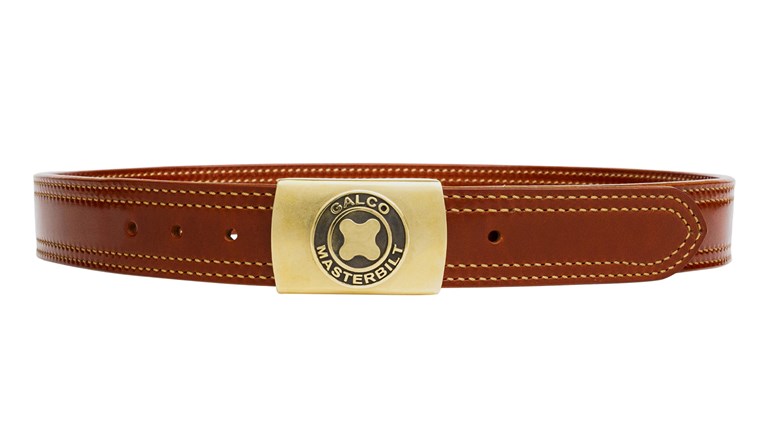Many years ago, when I first heard about the scout rifle concept, I didn’t really understand what it was all about. Here was a rifle that wasn’t as accurate as a good precision rifle (2-MOA is standard for this type of gun), that wasn’t as powerful as a big game hunting rifle (.308 Win. is a proven round, but it’s nobody’s first choice for dangerous game) and besides that, why would you want a bolt action rifle these days, when AR-10s are a thing?
Then it hit me: The scout rifle isn’t meant to excel at any of the tasks that those rifles are meant to perform. Rather, it’s meant to be one lightweight, easy-to-carry rifle that can perform each of those tasks and deliver adequate results in all of them, and do it in just about any location you can think of. Let’s take a look at the setup we’ve built for this episode.
Mossberg MVP Scout Rifle: MSRP $734
The Mossberg MVP Scout ticks a lot of the scout-rifle boxes. It has a forward-mounted section of Picatinny rail to mount a scout scope (more on that later). It’s chambered in .308 Win, the caliber recommended by Col. Jeff Cooper when he created the scout-rifle concept. It has a polymer stock for durability and long life. There is a ghost ring sight at the rear and a fiber optic sight up front in case the zero on your optic begins to wander.
Weighing in at 7 pounds, it is slightly over the ideal weight for a scout rifle as set down by Col. Cooper. However, it makes up for this transgression by using Armalite pattern AR-10 magazines, giving you almost limitless options for capacity.
The trigger on the MVP Scout is easily adjustable from 3 to 7 pounds, and the bolt action is very smooth and easy to use. If I have a complaint, it’s that it’s not available in a left-handed version, which forced me to use my non-dominant eye and shoot with what for me is my support hand.
The biggest feature of a scout rifle is that it’s meant for use in the field, dealing with a variety of different two-legged and four-legged problems, and the MVP Scout certainly fits that requirement. If you’re looking for something that is easy to carry all day long and can handle just about any shot at any target from 30 to 300 yards, this is a rifle worth investigating.
Burris Scout Riflescope 2-7x32mm: MSRP $540
One of the distinctive features of Col. Cooper’s version of a scout rifle was a forward-mounted, low-power optic with long eye relief, similar to a handgun optic. The idea behind this optic and mount was that you could hit the shots which required more precision using the magnified optic, but the forward mount and long eye relief meant you could keep both eyes open in order to see any targets that might suddenly appear.
At first glance, this is the same reason why you’d want an unmagified (1X) red-dot optic or a low-power variable optic (LPVO), both of which provide much the same benefits. However, in shooting the Burris Scout optic on the gun for this video, I realized that my attention was focused on a point further downrange with a scout scope than it would be with either a red dot or an LPVO. Those other two optics give me the sensation of looking through a tube at something, while with the Burris Scout scope, I was looking at how my environment interacted with my optic. It’s a subtle difference, but it made a big change at how I observed the world around me.
The Burris Scout Riflescope is a variable 2-7X optic. I found I kept it between 3 to 4X for most of my shooting, reserving the 7X setting for longer distances. The optic lacks the “throw ring” seen on many scopes today, but since I kept it at one setting for 90 percent of my shooting, this wasn’t an issue.
Galco Safari Ching Sling: MSRP $121
Named after its designer, Eric S.H. Ching, this sling starts off with the high level of leatherwork you’d expect to see in a Galco product, then takes a twist. While the most-common use for a rifle sling is to carry your gun on your shoulder, they can also be used to stabilize your rifle during precision engagements. A Ching sling which can easily be adjusted to add strength to your support hand was one of the requirements of a scout rifle, and the Galco Safari Sling is a variation of that idea. The middle of the sling is split in two, with a short “cup” of leather in between the split to rest your support elbow. This creates another point of contact between you and the rifle, adding extra stability with almost no extra setup. This sling is not a “tactical” sling meant for forward-facing carry and fast use of a modern sporting rifle. However, after using it for this video, I can definitely see the advantages of this sling out in the field, where you may have to make a precision shot at a moment’s notice using the gear you have on hand at that moment.

























